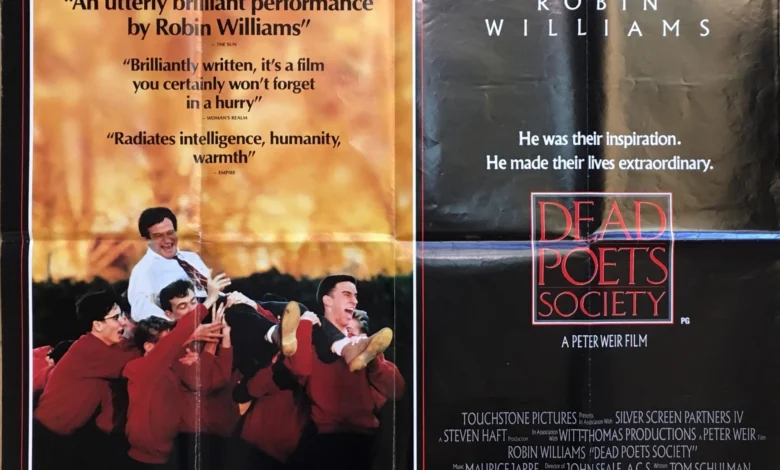Exploring Dead Poets Society Book: Themes, Characters, and Impact of the Classic Novel

The Dead Poets Society Book based on the screenplay by Tom Schulman, captures the spirit of rebellion, discovery, and the often intense journey of self-discovery. Dead Poets Society Book Set in the conservative environment of Welton Academy, an elite preparatory school, Dead Poets Society follows a group of young boys inspired by their unorthodox teacher, John Keating, who urges them to embrace life through poetry and “Carpe Diem”—seize the day. Dead Poets Society Book

The Origins of Dead Poets Society
Dead Poets Society was originally a screenplay by Tom Schulman, which he later adapted into a novel after the release of the film in 1989. Inspired partly by Schulman’s own Dead Poets Society Book school experiences, both the novel and film quickly gained a devoted following for their thought-provoking exploration of youth, education, and the push against societal expectations. The book, like the movie, captivates readers with themes of identity, freedom, and the profound influence of art and literature. Dead Poets Society Book
Plot Summary
The story unfolds at Welton Academy, a traditional all-boys boarding school with strict academic expectations. A new English teacher, John Keating, arrives with a teaching style that challenges the school’s rigid methods. Keating inspires Dead Poets Society Book his students to see the world differently, urging them to “make your lives extraordinary.” His unique perspective profoundly affects a group of students—Neil Perry, Todd Anderson, Charlie Dalton, and others—who revive a secret society called the “Dead Poets Society” to honor his ideas. The club meets in a cave, exploring poetry, music, and self-expression outside the confines of Welton’s conventional culture. Dead Poets Society Book
Key Themes in Dead Poets Society
Carpe Diem and Personal Freedom
The principle of “Carpe Diem” is the novel’s guiding theme. Keating encourages his students to seize opportunities and live life fully. This concept resonates with the boys as they navigate the expectations placed on them, driving them to make choices that impact their futures, for better or worse. Dead Poets Society Book
Conformity vs. Individuality
Welton Academy embodies strict traditions, discipline, and a relentless focus on achievement, reflecting societal pressures to conform. Dead Poets Society Book Through Keating’s influence, the boys begin to realize the power of individuality and self-expression, leading them to explore paths that challenge their families’ and society’s expectations. Dead Poets Society Book
The Role of Mentorship and Education
John Keating becomes a mentor figure who pushes the boundaries of Welton’s educational style. By embracing a student-centered Dead Poets Society Book approach that values curiosity and passion, he encourages his students to think for themselves, often placing him at odds with the institution’s conservative leaders. Dead Poets Society Book
Major Characters and Their Development
John Keating: The Idealistic Teacher
Keating’s unorthodox teaching methods clash with the administration, yet he remains passionate about his mission to inspire the students. His influence on Dead Poets Society Book the boys and his commitment to “Carpe Diem” make him a memorable figure whose philosophy shapes each character’s journey. Dead Poets Society Book
Neil Perry: Dreamer and Tragic Figure
Neil, an ambitious and idealistic student, finds inspiration in Keating’s teachings and pursues his passion for acting, despite his father’s objections. Dead Poets Society Book Neil’s story highlights the intense internal conflict between following one’s dreams and meeting parental expectations, culminating in a tragic turn that underscores the story’s darker themes. Dead Poets Society Book
Todd Anderson: The Journey from Fear to Self-Discovery
Timid and overshadowed by his older brother’s success, Todd Anderson finds himself encouraged by Keating and inspired by his peers. Dead Poets Society Book Todd’s journey from shy observer to confident speaker illustrates the power of mentorship and the importance of finding one’s voice. Dead Poets Society Book
Charlie Dalton, Knox Overstreet, and the Other Dead Poets
Each member of the society adds depth to the story, showcasing different perspectives on freedom and individuality. Charlie embraces rebellion, often pushing the boundaries, while Knox becomes emboldened to pursue love, showing how Keating’s lessons empower each of them uniquely. Dead Poets Society Book
The “Dead Poets Society” Club
The “Dead Poets Society” club becomes a symbol of freedom, allowing the boys to gather in secrecy, away from the rules of Welton Academy. They read poetry and share ideas that they could never express openly, bringing the message of “Carpe Diem” to life in a tangible way. Dead Poets Society Book
Carpe Diem as a Central Message
Keating’s call to “Carpe Diem” remains a timeless message, urging readers and characters alike to cherish the present and take charge of their lives. For the students, it becomes a mantra that challenges their futures, helping them evaluate their own dreams and aspirations against society’s expectations. Dead Poets Society Book
Education and Authority in Dead Poets Society
Welton Academy’s traditional methods clash with Keating’s teaching philosophy, exposing the limits of rigid authority. This conflict portrays the challenges within the educational system, which sometimes stifles creativity and individuality. The tension between Welton’s values and Keating’s ideals illustrates the importance of balanced, empathetic education.
Analyzing the Setting: Welton Academy
Welton is a prestigious, conservative school that prioritizes discipline and success, yet it’s a place where creativity is often subdued. Welton’s atmosphere and its principles—the “Four Pillars” of tradition, honor, discipline, and excellence—shape the students’ lives, representing the weight of tradition that Keating seeks to lighten.
Symbolism in Dead Poets Society
The novel is rich in symbolism, from the use of poetry by Walt Whitman and Henry David Thoreau to the cave where the club meets. Whitman’s work, especially, becomes a call to arms for the boys’ journey, with Keating famously urging them to “suck the marrow out of life.” The cave signifies a place of freedom and exploration, far from the watchful eyes of school authorities.
Critical Reception and Legacy
Both the book and film adaptation were met with critical acclaim, with praise for their exploration of individuality, creativity, and mentorship. While some critiques focus on its idealistic message, the story remains a powerful reminder of art’s role in shaping personal identity and challenging norms.
Adaptations and Cultural Impact
The 1989 film adaptation of Dead Poets Society, starring Robin Williams as John Keating, became iconic. Williams’ portrayal brought new layers to Keating’s character, capturing audiences and cementing the story’s place in popular culture. Its cultural impact continues, especially in education, where it inspires teachers and students alike to question traditional boundaries.
Comparing the Book and Film Versions
The book and film have unique approaches, though the film’s visual portrayal of Welton and its dynamic scenes of Keating’s teachings deepen the story’s emotional resonance. While both versions share core elements, readers may appreciate the book’s insights into characters’ internal struggles, while the film offers a broader emotional scope.
Why Dead Poets Society Remains a Classic
The novel’s universal themes of identity, freedom, and the influence of mentors make it timeless. Dead Poets Society resonates with readers of all ages, challenging them to reflect on their lives, choices, and the role of creativity in shaping one’s path.
Lessons for Readers Today
In an era marked by change and self-discovery, Dead Poets Society remains highly relevant. Its messages of living authentically, challenging conventions, and embracing one’s passions speak to readers worldwide, making it as compelling today as it was upon release.
FAQs
What does “Carpe Diem” mean in Dead Poets Society?
“Carpe Diem,” Latin for “seize the day,” is Keating’s central message, encouraging students to live life fully.
What happens to Neil Perry?
Neil’s tragic end underscores the novel’s themes of parental pressure and the struggle for personal freedom.
Why did Keating encourage the Dead Poets Society?
Keating saw the society as a safe outlet for self-expression, helping the boys explore independence.
How does the novel differ from the film?
The novel provides more internal reflections of characters, while the film emphasizes visual storytelling.
What does the cave symbolize?
The cave represents a refuge where the boys explore creativity away from the constraints of Welton.
What is the moral of Dead Poets Society?
The story promotes individuality, courage, and the importance of living authentically.
Conclusion
Dead Poets Society endures as a beloved novel for its powerful themes and characters that resonate across generations. Its insights into freedom, education, and the importance of mentorship inspire readers to seek their own paths and to cherish the present.



